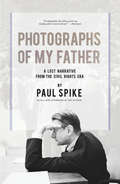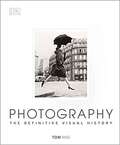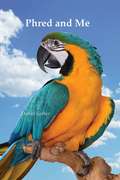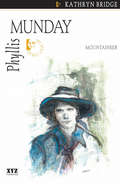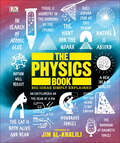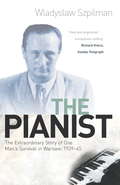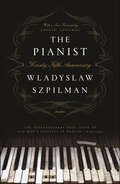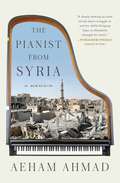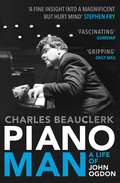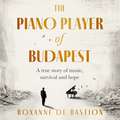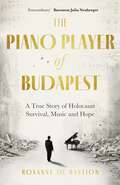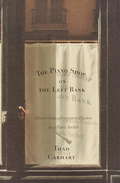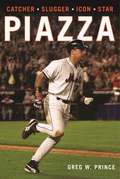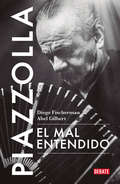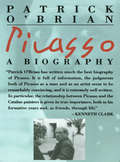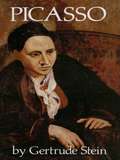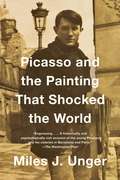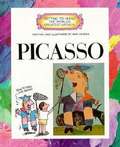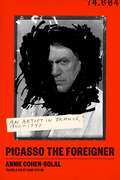- Table View
- List View
Photographs of My Father
by Paul SpikeAt the National Council of Churches, Robert Spike had organized American churches to support the passage of both the Civil Rights Act and Voting Rights Act, to march in Selma and to organize in Mississippi. An important white leader in the black civil rights struggle, he helped the LBJ White House pass legislation and write crucial civil rights speeches. In the midst of what he described as "the dirtiest fight of my life" struggling to save a federal Mississippi education program, he was viciously murdered in Columbus, Ohio. The murder was never solved. Very little effort went into finding the murderer. The Columbus police and the FBI hinted the unsolved murder was connected to Spike's undisclosed gay life. During his father's rise in the civil rights movement, Paul Spike lived a life typical of a young man in the 1960s, finding his way through a labyrinth of booze, drugs, and girls. At Columbia University, he was active in the 1968 student rebellion and friends with many SDS radicals. That rootless life ended with his father's murder.Paul Spike lives in London where he writes about politics, literature, film, and travel for a wide range of newspapers and magazines.
Photography: The Definitive Visual History
by Tom AngTrace the history and evolution of photography through iconic photographs, biographies of famous photographers, and the extraordinary cameras that made it possible. From the first black and white photograph to modern digital imagery, photography has been one of the most fascinating developments in the past 200 years. This is the perfect photographic coffee table book for budding photographers, seasoned professionals and anyone fascinated by the history of photography. It includes: • Biographies of 50 famous photographers like Ansel Adams and Dorethea Lang. • The history of photography, starting from its origin in the 1800s. • Beautiful illustrations, plus many of the most iconic photos in history. • Special features that center on a single arresting photograph, including Pulitzer Prize winners. The development of photography is possibly one of the most extraordinary feats of modern technology. Photography: The Definitive Visual Guide captures the most awe-inspiring photos, people that have pushed the boundaries of this medium, and the cameras they experimented with — from the daguerreotype to digital cameras. Packed with inspiration, this photography book also takes a step away from the pure art form and highlights how this medium has influenced social and cultural change. Author Tom Ang further includes segments on special types of photography — like street photography — and special features delving into the stories behind photographic images that changed how people saw the world!
Phred and Me
by Daniel GerberRequired reading for PUBHLTH 160 My Body/My Health taught by Dr. Gerber & Dr. Ayvazian at the University of Massachusetts, Amherst.
Phyllis Munday
by Kathryn BridgeIn 1924 Phyllis (Phyl) Munday did what no other woman had done before - reached the summit of Mt. Robson. She climbed close to 100 mountains in her lifetime, many of those first ascents. She honed her outdoor skills as a Girl Guide leader and remained active in Guides throughout her life. During the 1920s and 1930s, Phyl and her partner Don Munday pioneered exploration into the heart of the Coast Mountains.
The Physics Book: Big Ideas Simply Explained (DK Big Ideas)
by DKExplore the laws and theories of physics in this accessible introduction to the forces that shape our universe, our planet, and our everyday lives.Using a bold, graphics-led approach, The Physics Book sets out more than 80 of the key concepts and discoveries that have defined the subject and influenced our technology since the beginning of time. With the focus firmly on unpacking the thought behind each theory—as well as exploring when and how each idea and breakthrough came about—five themed chapters examine the history and developments in specific areas such as Light, Sound, and Electricity. Eureka moments abound: from Archimedes' bathtub discoveries about displacement and density, and Galileo's experiments with spheres falling from the Tower of Pisa, to Isaac Newton's apple and his conclusions about gravity and the laws of motion. You'll also learn about Albert Einstein's revelations about relativity; how the accidental discovery of cosmic microwave background radiation confirmed the Big Bang theory; the search for the Higgs boson particle; and why most of the universe is missing. If you've ever wondered exactly how physicists formulated—and proved—their abstract concepts, The Physics Book is the book for you.Series Overview: Big Ideas Simply Explained series uses creative design and innovative graphics along with straightforward and engaging writing to make complex subjects easier to understand. With over 7 million copies worldwide sold to date, these award-winning books provide just the information needed for students, families, or anyone interested in concise, thought-provoking refreshers on a single subject.
The Physics of Ettore Majorana
by Salvatore EspositoThrough just a handful of papers, Ettore Majorana left an indelible mark in the fields of physics, mathematics, computer science and even economics before his mysterious disappearance in 1938. It is only now that the importance of Majorana's work is being realised: Majorana fermions are intensely studied today, and his work on neutrino physics has provided possible explanations for the existence of dark matter. In this unique volume, Salvatore Esposito explores not only Majorana's known papers but, even more interestingly, unveils his unpublished works as well. These include powerful methods and results, ranging from the atomic two-centre problem, the Thomas-Fermi model and ferromagnetism to quasi-stationary states, n-component relativistic wave equations and quantum scalar electrodynamics. Featuring biographical notes and contributions from leading experts Evgeny Akhmedov and Frank Wilczek, this fascinating book will captivate graduate students and researchers interested in frontier science as well as in the history of science.
The Pianist
by Anthea Bell Wladyslaw SzpilmanDramatic story of a pianists survival of World War II in Poland.
The Pianist
by Wladyslaw SzpilmanThe bestselling memoir of a Jewish pianist who survived the war in Warsaw against all odds.'We are drawn in to share his surprise and then disbelief at the horrifying progress of events, all conveyed with an understated intimacy and dailiness that render them painfully close... riveting' OBSERVEROn September 23, 1939, Wladyslaw Szpilman played Chopin's Nocturne in C-sharp minor live on the radio as shells exploded outside - so loudly that he couldn't hear his piano. It was the last live music broadcast from Warsaw: That day, a German bomb hit the station, and Polish Radio went off the air.Though he lost his entire family, Szpilman survived in hiding. In the end, his life was saved by a German officer who heard him play the same Chopin Nocturne on a piano found among the rubble. Written immediately after the war and suppressed for decades, THE PIANIST is a stunning testament to human endurance and the redemptive power of fellow feeling.'The images drawn are unusually sharp and clear... but its moral tone is even more striking: Szpilman refuses to make a hero or a demon out of anyone' LITERARY REVIEW
The Pianist: The Extraordinary True Story of One Man's Survival in Warsaw, 1939–1945
by Wladyslaw SzpilmanThe memoir that inspired Roman Polanski's Oscar-winning film, which won the Cannes Film Festival's most prestigious prize—the Palme d'Or. Named one of the Best Books of 1999 by the Los Angeles TimesOn September 23, 1939, Wladyslaw Szpilman played Chopin's Nocturne in C-sharp minor live on the radio as shells exploded outside—so loudly that he couldn't hear his piano. It was the last live music broadcast from Warsaw: That day, a German bomb hit the station, and Polish Radio went off the air.Though he lost his entire family, Szpilman survived in hiding. In the end, his life was saved by a German officer who heard him play the same Chopin Nocturne on a piano found among the rubble. Written immediately after the war and suppressed for decades, The Pianist is a stunning testament to human endurance and the redemptive power of fellow feeling.
The Pianist from Syria: A Memoir
by Aeham AhmadAn astonishing but true account of a pianist’s escape from war-torn Syria to Germany offers a deeply personal perspective on the most devastating refugee crisis of this century.Aeham Ahmad was born a second-generation refugee—the son of a blind violinist and carpenter who recognized Aeham's talent and taught him how to play piano and love music from an early age. When his grandparents and father were forced to flee Israel and seek refuge from the Israeli–Palestinian conflict ravaging their home, Aeham’s family built a life in Yarmouk, an unofficial camp to more than 160,000 Palestinian refugees in Damascus. They raised a new generation in Syria while waiting for the conflict to be resolved so they could return to their homeland. Instead, another fight overtook their asylum. Their only haven was in music and in each other. Forced to leave his family behind, Aeham sought out a safe place for them to call home and build a better life, taking solace in the indestructible bond between fathers and sons to keep moving forward. Heart-wrenching yet ultimately full of hope, and told in a raw and poignant voice, The Pianist from Syria is a gripping portrait of one man’s search for a peaceful life for his family and of a country being torn apart as the world watches in horror.
Pianist's Progress
by Helen Drees RuttencutterIn Pianist's Progress, Helen Ruttencutter takes the reader behind the scenes in the fiercely competitive music world, vividly depicting a young musician's quest for a career. But ultimately her subject is the dynamics of training and grooming for success.
Piano Man: Life of John Ogdon
by Charles BeauclerkThe first full biography of John Ogdon; a tortured genius and arguably the greatest British pianist of all time.<P> From the beginning of his professional career as a soloist John Ogdon was hailed as a musician of rare understanding and phenomenal technical gifts. Able to play and memorize just about any score at sight, tales of his impossible exploits at the keyboard are legion. Yet Ogdon was a man of extremes and it was this very extremity, while the source of much of his gift, that also led to appalling suffering.<P> Here was a man whose feelings were inexpressibly deep and often tormenting, and Ogdon's glory days, following his coveted Tchaikovsky prize in 1962, came to a sudden end in 1973 when he suffered a severe mental breakdown which led to his being certified insane and made patient of the Court of Protection. Over the course of several harrowing years Ogdon would spend large periods of time in and out of psychiatric wards and halfway houses. The drugs and treatments prescribed sometimes affected his coordination, and his reputation suffered as a result. Yet Ogdon's commitment to his art remained undimmed, and until the end he drew out performances of tremendous beauty and conviction from the depths of his ravaged heart.<P> In this illuminating biography, Charles Beauclerk explores the life of a brilliantly inspired artist, for whom music was both his cross and his salvation.
The Piano Player of Budapest: A True Story of Holocaust Survival, Music and Hope
by Roxanne de BastionOne man, his piano and their miraculous survival.'Extraordinary' Baroness Julia Neuberger'Stunning. A beautiful blend of action, poetry, thought-provoking comment and music ... just brilliant' James Ainscough OBE'A gripping narrative of suffering, loss and survival, with music at its heart' Fiona MaddocksAll future, freedom and success lay ahead of young pianist Stephen de Bastion in 1930s Hungary. Life whirled headily around cocktails, romance, applause and the buzz of Budapest late into the night. Then, 1939. Stephen's world disintegrates and this becomes a story of his brutal descent, of his time in labour camps, of Mauthausen and Gunskirchen and the unimaginable horrors he endured during the Holocaust as a man of Jewish descent. Yet, this is also a tale of extraordinary escape ... and the piano, waiting for him.The same piano that Roxanne de Bastion, his granddaughter, inherits when her father dies. It has been in the family over one hundred years but it is only when, deep in grief, she discovers a cassette recording of Stephen, that the astonishing history of the piano, the man and her family begins to unravel. Weaving together his original recordings, unpublished memoirs, letters and documents, Roxanne sings out her grandfather's story of music and hope, lost and found. Luminous and profoundly moving, this book captures the great spirit of one man in the face of darkness and the hope that echoes down through generations.
The Piano Player of Budapest: A True Story of Holocaust Survival, Music and Hope
by Roxanne de BastionOne man, his piano and their miraculous survival.'Extraordinary' Baroness Julia Neuberger'Stunning. A beautiful blend of action, poetry, thought-provoking comment and music ... just brilliant' James Ainscough OBE'A gripping narrative of suffering, loss and survival, with music at its heart' Fiona MaddocksAll future, freedom and success lay ahead of young pianist Stephen de Bastion in 1930s Hungary. Life whirled headily around cocktails, romance, applause and the buzz of Budapest late into the night. Then, 1939. Stephen's world disintegrates and this becomes a story of his brutal descent, of his time in labour camps, of Mauthausen and Gunskirchen and the unimaginable horrors he endured during the Holocaust as a man of Jewish descent. Yet, this is also a tale of extraordinary escape ... and the piano, waiting for him.The same piano that Roxanne de Bastion, his granddaughter, inherits when her father dies. It has been in the family over one hundred years but it is only when, deep in grief, she discovers a cassette recording of Stephen, that the astonishing history of the piano, the man and her family begins to unravel. Weaving together his original recordings, unpublished memoirs, letters and documents, Roxanne sings out her grandfather's story of music and hope, lost and found. Luminous and profoundly moving, this book captures the great spirit of one man in the face of darkness and the hope that echoes down through generations.
The Piano Shop on the Left Bank
by Thad CarhartThad Carhart never realized there was a gap in his life until he happened upon Desforges Pianos, a demure little shopfront in his Pairs neighborhood that seemed to want to hide rather than advertise its wares. Like Alice in Wonderland, he found his attempts to gain entry rebuffed at every turn. An accidental introduction finally opened the door to the quartier's oddest hangout, where locals -- from university professors to pipefitters -- gather on Friday evenings to discuss music, love, and life over a glass of wine.Luc, the atelier's master, proves an excellent guide to the history of this most gloriously impractical of instruments. A bewildering variety passes through his restorer's hands: delicate ancient pianofortes, one perhaps the onetime possession of Beethoven. Great hulking beasts of thunderous voice. And the modest piano "with the heart of a lion" that was to become Thad's own.What emerges is a warm and intuitive portrait of the secret Paris -- one closed to all but a knowing few. The Piano Shop on the Left Bank is the perfect book for music lovers, or for anyone who longs to recapture a lost passion.From the Hardcover edition.
Piano Starts Here: The Young Art Tatum
by Robert A. ParkerRegardless of whether they've heard of jazz or Art Tatum, young readers will appreciate how Parker uses simple, lyrical storytelling and colorful and energetic ink-and-wash illustrations to show the world as young Art Tatum might have seen it. Tatum came from modest beginnings and was nearly blind, but his passion for the piano and his acute memory for any sound that he heard drove him to become a virtuoso who was revered by both classical and jazz pianists alike. Included in the back matter is a biography and bibliography.
Piano Starts Here: The Young Art Tatum
by Robert Andrew ParkerRegardless of whether they've heard of jazz or Art Tatum, young readers will appreciate how Parker uses simple, lyrical storytelling and colorful and energetic ink-and-wash illustrations to show the world as young Art Tatum might have seen it. Tatum came from modest beginnings and was nearly blind, but his passion for the piano and his acute memory for any sound that he heard drove him to become a virtuoso who was revered by both classical and jazz pianists alike. Included in the back matter is a biography and bibliography.<P><P> Winner of the Schneider Family Book Award
Piazza: Catcher, Slugger, Icon, Star
by Greg W. PrinceA franchise and fan base in perpetual search of validation finally had its ticket punched as 2016 dawned. Mike Piazza, who held records in one hand and a city’s rapt attention in the other, gained election to the Hall of Fame. Within weeks of this long-awaited announcement, the ballclub with whom he chose to cast his eternal lot, the New York Mets, made a date to retire his number.In Piazza: Catcher, Slugger, Icon, Star, Greg W. Prince-cocreator of Faith and Fear in Flushing, "the blog for Mets fans who like to read,” and author of Amazin’ Again, the story of the 2015 National League champions-explores the parallel paths Piazza and the Mets set out on in the early 1990s and how their individual journeys merged into a mutual quest for transcendence. From marriage of convenience to lifetime bond to a state of baseball grace reached only once before in team history, Piazza examines how the stranger from Los Angeles became New York’s favorite son and why Mets fans continued to rally to Piazza’s cause years after he took his final swing for them.
Piazzolla. El mal entendido
by Diego Fischerman Abel GilbertPiazzolla. El mal entendido es la biografía definitiva de uno de los compositores de tango más importantes del mundo. La vida y la obra de Astor Piazzolla transcurrieron entre su demonización y el asombrado reconocimiento. Fue el emblema sonoro de una ciudad que buscaba estar a tono con su tiempo y sus aspiraciones. A un siglo de su nacimiento, esta nueva edición de Piazzolla. El mal entendido recupera la trama artística, cultural y política que acompañó al bandoneonista desde su aparición fulgurante junto a Aníbal Troilo hasta su inserción internacional más allá del tango. El ensayo intenta ser un puente crítico de acercamiento a una música que no deja de abrirse a nuevos sentidos y reflexiones. "Este libro siempre ha tratado de ser un puente (uno más) con aquello que nos legó Piazzolla, un modo reflexivo de acercamiento a lo que, primero, llegó como una vibración: el aire de Buenos Aires en movimiento", dicen Fischerman y Gilbert.
Picasso: Creator and Destroyer
by Arianna HuffingtonSurprise was a key characteristic of Picasso's art, and it was the most persistent emotion evoked in me during the years this book has been in the making. I was brought up, like so many of my generation, to see Picasso as the most extraordinary, the most compelling, the most original, the most protean, the most influential, the most seductive and certainly the most idolized artist of the twentieth century.
Picasso: A Biography
by Patrick O'Brian"The best biography of Picasso."--Kenneth Clark Patrick O'Brian's outstanding biography of Picasso is here available in paperback for the first time. It is the most comprehensive yet written, and the only biography fully to appreciate the distinctly Mediterranean origins of Picasso's character and art. Everything about Picasso, except his physical stature, was on an enormous scale. No painter of the first rank has been so awe-inspiringly productive. No painter of any rank has made so much money. A few painters have rivaled his life span of ninety years, but none has attracted so avid, so insatiable, a public interest. Patrick O'Brian knew Picasso sufficiently well to have a strong sense of his personality. The man that emerges from this scholarly, passionate, and brilliantly written biography is one of many contradictions: hard and tender, mean and generous, affectionate and cold, private despite the relish of his fame. In his later years he professed communism, yet in O'Brian's view retained to the end of his life a residual Catholic outlook. Not that such matters were allowed to interfere with his vigorous sensuality. Sex and money, eating and drinking, friends and quarrels, comedies and tragedies, suicides and wars tumble one another in the vast chaos of his experience. he was "a man almost as lonely as the sun, but one who glowed with much the same fierce, burning life." It is with that impression of its subject that this book leaves its readers.
Picasso
by Gertrude SteinFor more than a generation, Gertrude Stein's Paris home at 27 rue de Fleurus was the center of a glittering coterie of artists and writers, one of whom was Pablo Picasso. In this intimate and revealing memoir, Stein tells us much about the great man (and herself) and offers many insights into the life and art of the 20th century's greatest painter.Mixing biological fact with artistic and aesthetic comments, she limns a unique portrait of Picasso as a founder of Cubism, an intimate of Appollinaire, Max Jacob, Braque, Derain, and others, and a genius driven by a ceaseless quest to convey his vision of the 20th century. We learn, for example, of the importance of his native Spain in shaping Picasso's approach to art; of the influence of calligraphy and African sculpture; of his profound struggle to remain true to his own vision; of the overriding need to empty himself of the forms and ideas that welled up within him.Stein's close relationship with Picasso furnishes her with a unique vantage point in composing this perceptive and provocative reminiscence. It will delight any admirer of Picasso or Gertrude Stein; it is indispensable to an understanding of modern art.
Picasso and the Painting That Shocked the World
by Miles J. UngerWhen Picasso became Picasso: the story of how an obscure young painter from Barcelona came to Paris and made himself into the most influential artist of the twentieth century.In 1900, an eighteen-year-old Spaniard named Pablo Picasso made his first trip to Paris. It was in this glittering capital of the international art world that, after suffering years of poverty and neglect, he emerged as the leader of a bohemian band of painters, sculptors, and poets. Fueled by opium and alcohol, inspired by raucous late-night conversations at the Lapin Agile cabaret, Picasso and his friends resolved to shake up the world. For most of these years Picasso lived and worked in a squalid tenement known as the Bateau Lavoir, in the heart of picturesque Montmartre. Here he met his first true love, Fernande Olivier, a muse whom he would transform in his art from Symbolist goddess to Cubist monster. These were years of struggle, often of desperation, but Picasso later looked back on them as the happiest of his long life. Recognition came slowly: first in the avant-garde circles in which he traveled, and later among a small group of daring collectors, including the Americans Leo and Gertrude Stein. In 1906, Picasso began the vast, disturbing masterpiece known as Les Demoiselles d’Avignon. Inspired by the groundbreaking painting of Paul Cézanne and the startling inventiveness of African and tribal sculpture, Picasso created a work that captured and defined the disorienting experience of modernity itself. The painting proved so shocking that even his friends assumed he’d gone mad. Only his colleague George Braque understood what Picasso was trying to do. Over the next few years they teamed up to create Cubism, the most revolutionary and influential movement in twentieth-century art. This is the story of an artistic genius with a singular creative gift. It is filled with heartbreak and triumph, despair and delirium, all of it played out against the backdrop of the world’s most captivating city.
Picasso (Getting to Know the World's Greatest Artists)
by Mike VeneziaBriefly examines the life and work of the renowned twentieth-century artist, describing and giving examples from his various periods or styles.
Picasso the Foreigner: An Artist in France, 1900-1973
by Annie Cohen-Solal"Absorbing [and] astute . . . Cohen-Solal captures a facet of Picasso’s character long overlooked." —Hamilton Cain, The Wall Street Journal"A beguiling read, as ingenious as it is ambitious . . . See Picasso and Paris shimmering with new light." —Mark Braude, author of Kiki Man Ray: Art, Love, and Rivalry in 1920s ParisBorn from her probing inquiry into Picasso's odyssey in France, which inspired a museum exhibition of the same name, historian Annie-Cohen Solal’s Picasso the Foreigner presents a bold new understanding of the artist’s career and his relationship with the country he called home.Winner of the 2021 Prix Femina EssaiBefore Picasso became Picasso—the iconic artist now celebrated as one of France’s leading figures—he was constantly surveilled by the police. Amidst political tensions in the spring of 1901, he was flagged as an anarchist by the security services—the first of many entries in what would become an extensive case file. Though he soon became the leader of the cubist avant-garde, and became increasingly wealthy as his reputation grew worldwide, Picasso’s art was largely excluded from public collections in France for the next four decades. The genius who conceived Guernica as a visceral statement against fascism in 1937 was even denied French citizenship three years later, on the eve of the Nazi occupation. In a country where the police and the conservative Académie des Beaux-Arts represented two major pillars of the establishment at the time, Picasso faced a triple stigma—as a foreigner, a political radical, and an avant-garde artist.Picasso the Foreigner approaches the artist’s career and work from an entirely new angle, making extensive use of fascinating and long-understudied archival sources. In this groundbreaking narrative, Picasso emerges as an artist ahead of his time not only aesthetically but politically, one who ignored national modes in favor of contemporary cosmopolitan forms. Cohen-Solal reveals how, in a period encompassing the brutality of World War I, the Nazi occupation, and Cold War rivalries, Picasso strategized and fought to preserve his agency, eventually leaving Paris for good in 1955. He chose the south over the north, the provinces over the capital, and craftspeople over academicians, while simultaneously achieving widespread fame. The artist never became a citizen of France, yet he enriched and dynamized its culture like few other figures in the country’s history. This book, for the first time, explains how.Includes color images
